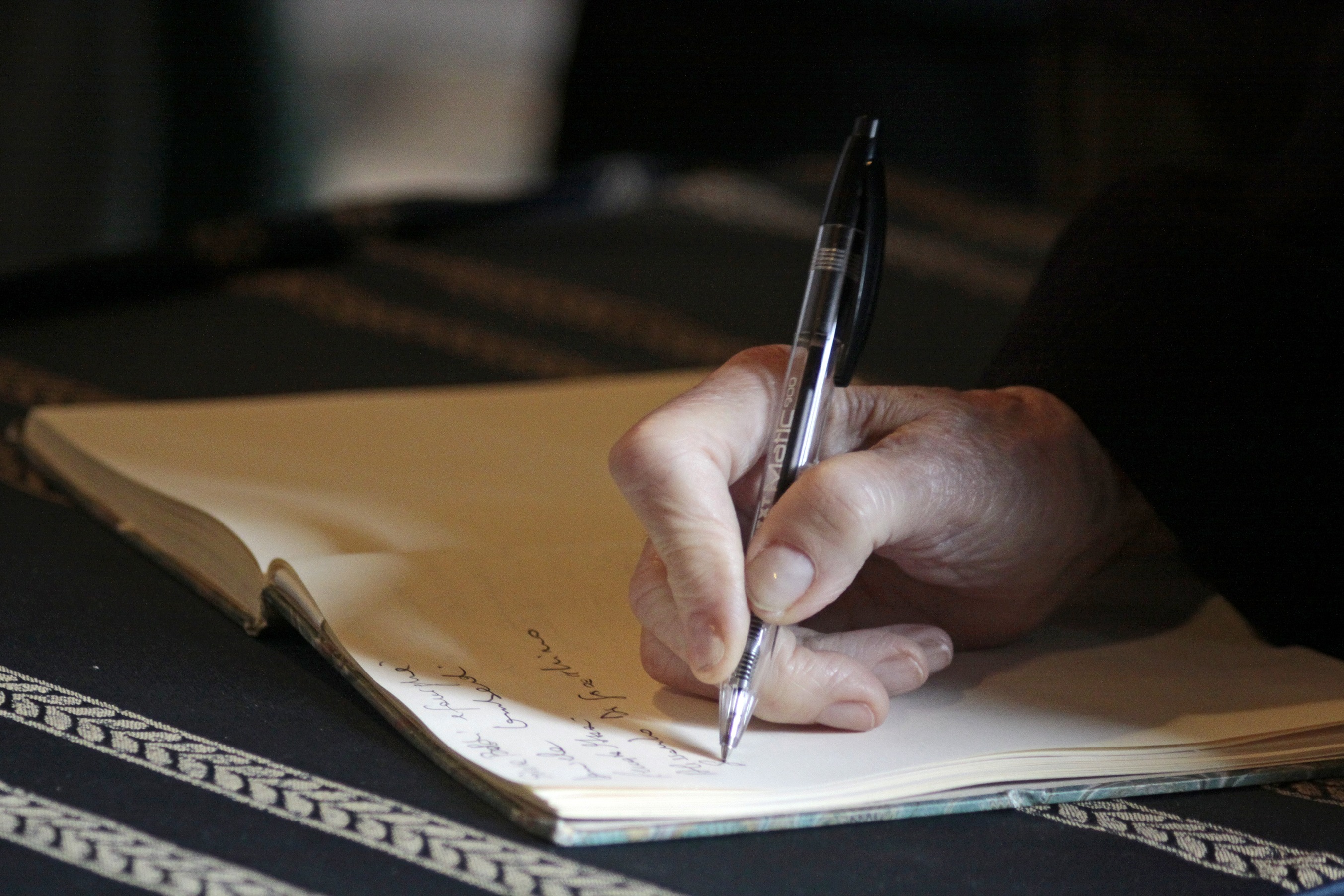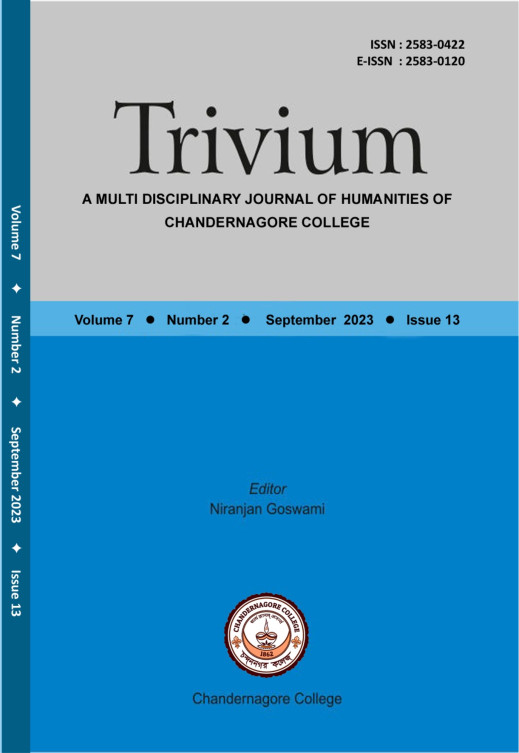Author Guidelines
The Editorial Board reserves the right of accepting or rejecting any contribution and of making suitable alterations and amendments, without assigning any reason.
Submissions should be original and not previously published elsewhere or submitted for consideration to any other journal. Authors should submit a declaration to this intent along with the manuscript. Manuscripts may be rejected without peer review by the Editor-in-Chief if they do not comply with the instructions for authors. The Title Sheet should be a separate file indicating the Title of the Article, Name, Designation and Affiliation of the Authors. In no case these particulars should be mentioned in the file containing the article itself to help the double-blind peer review process. All submissions should be double spaced in MS Word, Times New Roman, Font size 11. All articles should be in the range of 2500 to 8000 words. The upper limit of words is flexible.
Submissions should be original and not previously published elsewhere or submitted for consideration to any other journal. Authors should submit a declaration to this intent along with the manuscript. Manuscripts may be rejected without peer review by the Editor-in-Chief if they do not comply with the instructions for authors. The Title Sheet should be a separate file indicating the Title of the Article, Name, Designation and Affiliation of the Authors. In no case these particulars should be mentioned in the file containing the article itself to help the double-blind peer review process. All submissions should be double spaced in MS Word, Times New Roman, Font size 11. All articles should be in the range of 2500 to 8000 words. The upper limit of words is flexible.
FILES TO SUBMIT
- Abstract: A separate file for an abstract within 300 words and four/five keywords along with it in MS Word. The abstract should contain the title of the paper. It should not contain author’s details. The abstract should provide the gist of the argument of the paper indicating the scope, range and theoretical perspectives. It is submitted to different indexing bodies and collections of abstracts. Therefore it should be written in lucid English keeping the international reader in mind. For the same reason writers in Bengali must also submit an English version of their abstract with a loose translation of their title and keywords.
- Author's Declaration: A separate file containing author’s declaration that the article submitted is original writing by the author and it has not been submitted to any other journal or publisher for publication. Once a paper is submitted to Trivium, it cannot be withdrawn without permission.
- Title Sheet: A separate file containing the Title Sheet; it should contain the Title of the paper, Name/s of Author/s, Designation and Affiliation, mobile number and e-mail ID.
- The Paper: A separate file containing the paper. This paper must contain also the title of the paper. It must not contain name or any information about the authors. There should be no borders or decorations.
- CHARTS, TABLES, FIGURES AND ILLUSTRATIONS should be placed on a separate file or page. Authors will be responsible for negotiating permission if and where necessary for reproducing illustrations, etc. Permission should be sought well in time so that the press is not held up.
GENERAL GUIDELINES
-
The contributor should provide only soft copy of the text in MS Word, Times New Roman Font size 11 in a separate file. The text and end-notes should be double spaced. The notes should be inserted using the References tab of MS Word, superscripted and in Arabic numerals(1,2,3), Font size 10. Do not justify the text or the notes.
-
Quotations should be in single inverted commas. Only quotation within quotation will be in double inverted commas. Quotations longer than 25 words should be indented 0.5 on both sides without quotation marks. Such block quotations should be in font size 10 and single spaced.
-
BENGALI ESSAYS should be in Avro software, Kalpurush font, font-size 12. Any English words or phrases used in a Bengali essay should be in Times New Roman, font-size 11. Writers in Bengali should submit their files in both MS WORD AND PDF FORMATS. The number of files for writers in Bengali therefore will be 8 or 10. Abstract for such essays must be in English for indexing purposes.
Style
-
Citation details should be in the following manner when citing for the first time a book: Author’s name, comma Title (italicized) Within parentheses: Place of publication, colon, publisher, comma, year of publication, page numbers, Example:
Soren Kierkegaard, Fear and Trembling: Dialectical Lyric by Johannes de silentio (London: Penguin Books, 1985), pp. 65-67. Subsequent citations may use the abbreviated form(short title) as shown below: Kierkegaard, Fear and Trembling, p.64. -
In the case of a reprint or subsequent edition, the date of the first edition should be given, followed by a semi-colon, reprint or edition details, place of publication, colon, publisher, comma, date (all these items within parenthesis), and then the page numbers Example:
Colin Watson, Snobbery with Violence (1971; Repr. London: Eyre Methuen, 1987), p. 23. -
For references to articles in Journals, collections and anthologies the following style may be used: Huston Diehl, ‘Horrid Image, Sorry Sight, Fatal Vision: The Visual Rhetoric in Macbeth’, Shakespeare Studies 16 (1983): 191-203. Please do not abbreviate journal titles.
-
Full details are to be provided for other sources such as facsimiles, newspaper articles, interviews, material on microfilm, websites (page title, full URL and date of access), etc.
-
FOR ACT, SCENE AND LINE REFERENCES TO PLAYS, the italicized title should be followed by a comma, act no. in capital roman numerals, stop, scene no. in lower-case roman numerals, stop, line no.(s) in Arabic numerals. Example:
Colin Watson, Macbeth, III.iii.3. -
TITLES OF CONSTITUENT SECTIONS, ESSAYS, POEMS, etc. should be placed within single quotation marks.
-
Block Quotations: Quotations not exceeding 25 words may run on with the text and be put within single quotation marks. Other quotations should be displayed in blocks with right and left indents. Quotations longer than 25 words should be indented 0.5 on both sides without quotation marks. Such block quotations should be in font-size 10 and single spaced.
-
All quotations should follow the original exactly in respect of spelling, capitalization, italicization, punctuation, etc.
-
British spellings are preferred to American alternatives. Quotations should follow the spellings in the sources.
-
The copyright of all articles published in the journal will belong to Chandernagore College.


